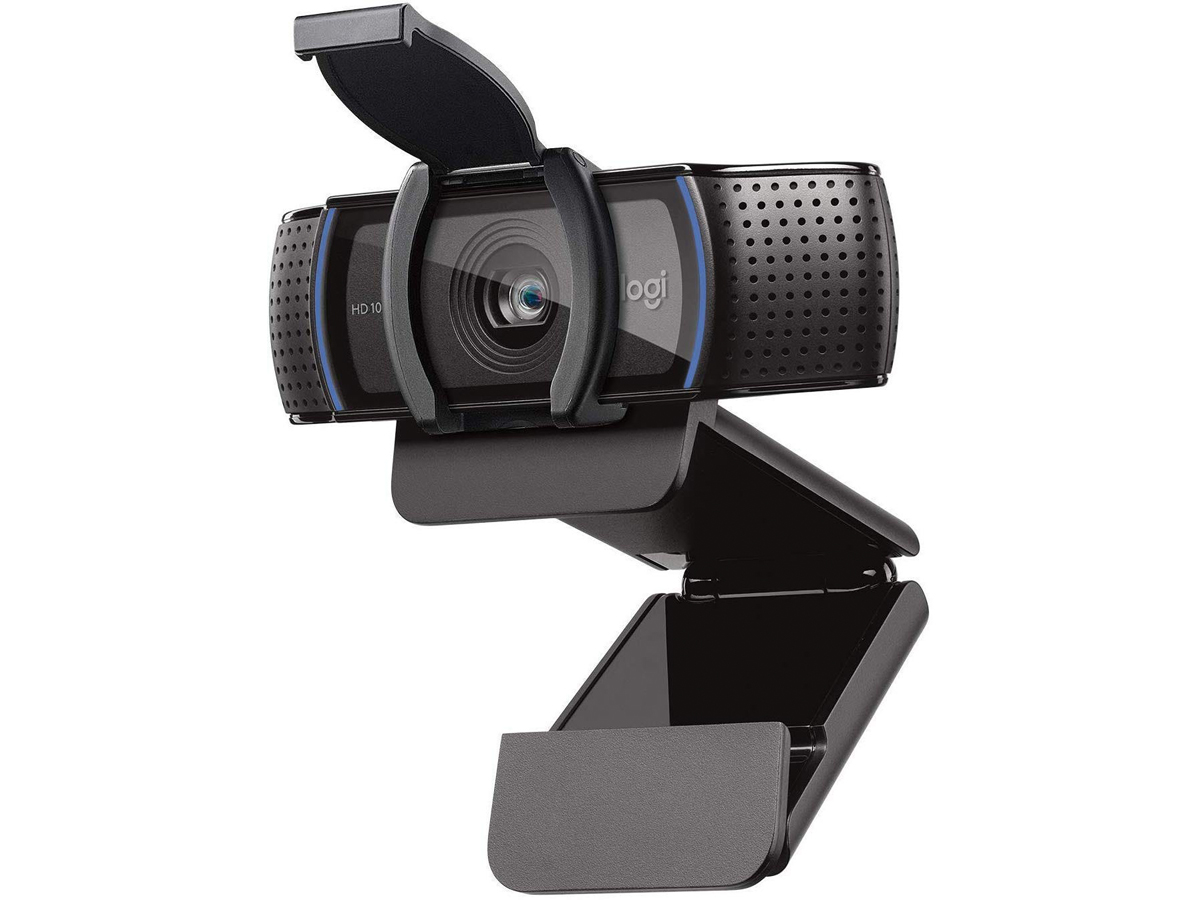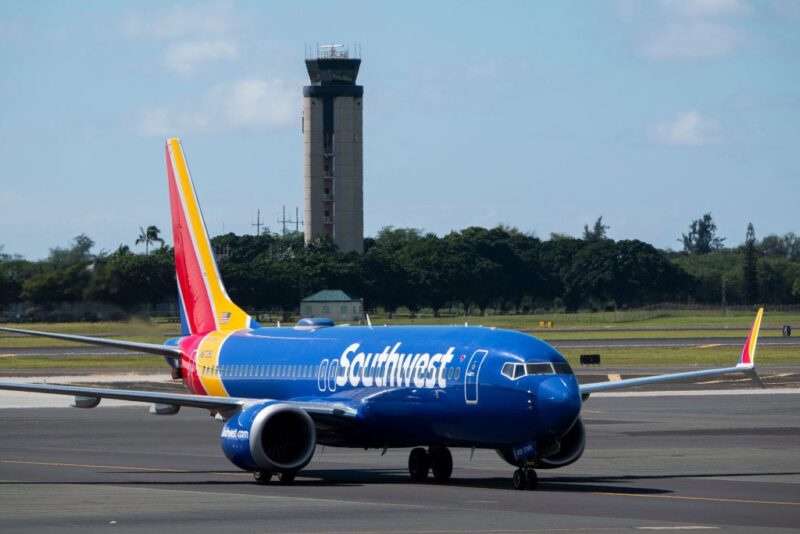- If you need to join a video conference or conduct a live stream to Facebook or Twitch, you need a decent computer webcam.
- Having a great webcam has become far more essential than ever before as many of us are homebound and social distancing in response to the COVID-19 pandemic. This is especially the case as many schools and companies are remaining remote for the foreseeable future.
- The Logitech C920S is a minor update to what has been our top pick for the best webcam for years on account of its excellent 1080p image quality, flexible stand, and incredibly reasonable price – now featuring a privacy shutter.
- Can’t find a webcam to buy? Here’s how to turn your camera into a webcam.
Webcams aren’t merely for catching up with friends or dialing into a meeting anymore. Today, they’re essential in a ubiquitous work-from-home world, which looks like it may stay remote well into the future. Webcams with 1080p resolution have been readily available since 2012, opening up the door for recordings that look a lot better than the built-in webcam on your laptop.
In this buying guide, we’ve rounded up the best webcams you can buy based on our testing, including the Logitech C920S, Logitech 4K Brio, and Razer Kiyo among others. We also consulted a number of buying guides and first-hand reviews from experts to choose our picks.
A great webcam should work right out of the box, and any included software should provide added functionality. The camera should offer a sharp, clean image with accurate autofocus that doesn’t jump around too much. It also helps to include a stand with flexible options. Image resolution used to be a bigger issue, but even the most budget-friendly webcams on our list support 720p at 30 frames per second, and the Brio pumps out a full 60 fps at 1080p. And, higher resolution video may not even benefit you in online meetings if your internet doesn’t have the uplink bandwidth to support it.
Instead of reaching for higher resolutions, most modern webcams have added value with extra features. The Logitech Brio’s depth-sensing technology lets you ditch clumsy backdrops and green screens to insert any digital background of your choosing, and facial recognition can unlock your computer the moment you sit down. The Kiyo’s built-in lighting takes some of the labor out of streaming. If you do just need something simple for dialing into a meeting, the Logitech C615 and Microsoft LifeCam HD-3000 will save you some cash without cutting corners. No idea where to begin? We have some deeper buying advice here.
Here are the best webcams you can buy:
- Best webcam overall: Logitech C920S
- Best 4K webcam: Logitech Brio
- Best webcam for streaming: Razer Kiyo
- Best affordable webcam: Logitech C615
- What to look for when buying a new webcam
Updated on 8/25/2020 by Mark Knapp: Added new language for timeliness and accuracy for the time of last update, and added link to new how-to guide for turning your other imaging devices into webcams. Checked all product links for accuracy.
The best webcam overall
The Logitech C920S serves as an excellent update to its predecessor, now adding a privacy shutter to a webcam with already fantastic resolution and easy setup.
Since its predecessor debuted in 2012 and now in a slightly updated form with an "S" on its name, the Logitech C920S has been king of the webcams, and for good reason. It captures sharp video at 1080p, requires no setup, and has an excellent stand for laptops, monitors, and tripods.
From occasional Skype chatters to professional Twitch streamers, the C920 fills any role happily. And now, the C920S has a privacy shutter for when it's not in use, which is especially useful for people with desktops or simply don't want to remove and reattach their webcam over and over again
Like most modern webcams, it should work right out of the box with your favorite video conferencing or capture software. Logitech offers an expanded application with enhanced controls and filters if you're looking to tweak the image or use it in situations other than sitting on top of your monitor.
We only have minor complaints about Logitech's C920 webcam line. In our tests, it captured a decent image with low lighting, but the frame rate can stutter a bit as a result. That's only in very dark situations, though. Adding room lighting or a lamp is enough to ensure smooth video. Its microphone doesn't sound great, but most webcams don't offer high-quality audio capture.
Logitech's slightly-newer C922 webcam is identical to the C920 webcam we're recommending, except for a few features. The newer C922 supports 1080p and 720p at 60 frames per second, performs better in low light, and has a software-based green screen that doesn't work particularly well. It's typically $20-$30 more than the C920, which makes it hard to recommend instead unless you really need the higher frame rate and resolution.
If you really need those features, our next pick, the Logitech Brio, is a better choice. If you don't need the extras, Logitech's C920S won't let you down.
Pros: Great image quality, 1080p, no software required, low price, new privacy shutter
Cons: Stutters in low light
The best webcam for 4K

Even without much competition, Logitech's Brio 4K webcam shines with great image quality and unheard of resolution.
Most people don't need a 4K webcam. Videos at that resolution generate massive files, they're hard to edit and work with, and most video conferencing software doesn't even support anything over 1080p. However, 4K webcams are a great option for people who are looking to record 1080p video at 60 frames per second, because that's something less expensive webcams can't do.
If you're dead-set on a 4K webcam, the Logitech Brio 4K is basically the only option, and it's an excellent one. It captures a great image, with clear motion and a nice sharp focus. It takes quite a bit of computer horsepower to capture 4K video, and the webcam benefits greatly from plenty of bright, natural light. In most cases, the 1080p image will look a lot nicer, especially without proper lighting and distance from the subject.
The Brio is also the only camera in our guide that sports Windows Hello facial recognition. This nifty feature lets you log in to your computer simply by sitting down and looking at the camera. As long as you're running Windows 10, you won't need any extra software.
The webcam also supports background removal through the Logitech software, so you can eliminate any embarrassing elements from the background during your conference call.
It boasts fairly positive Amazon reviews, although there aren't as many as we saw on the other webcams. That's largely due to the Brio's near-$200 price point, which is well above most mainstream webcams. Still, if you need the resolution and feature set, there are few webcams out there that can compete.
Pros: Massive 4K resolution, 1080p at 60 fps, facial recognition
Cons: Expensive, most software doesn't support 4K recording
The best webcam for streaming

There's a lot to keep track of while streaming, and the Razer Kiyo simplifies the process without any fuss.
Live streaming is more popular than ever, and image quality matters a whole lot more on Twitch than it does when you're catching up with a friend across the country. Lighting is also a lot more important with small webcams, so Razer attached a ring light to the front of its Kiyo webcam. It's certainly not the webcam everyone needs, but if you're already using external lighting to stream, it simplifies the setup process.
Around a fairly traditional-looking webcam, you'll find a ring light with 12 variable light levels in a hard, blue light. The levels range from off, to extremely bright. You'll still need some extra lighting for backdrops or green screens, but the Kiyo should give your face a nice, even hue that looks effortless. Like most of the other picks, it struggles in low light, but it excels in the bright conditions the built-in light provides.
Laptop Magazine praised the Kiyo's image quality, smart design, and in particular, its convenience while streaming. Its microphone is pretty quiet, but it actually sounds slightly above-average for a webcam. You'll still want dedicated audio for streaming, however, because no webcam sounds that good.
The Kiyo lacks any software or extra drivers, which is both a positive and a negative. It makes setup and configuration easier, as you can use OBS or your favorite streaming software without juggling a proprietary app. On the other hand, it also means you control the lighting by twisting a knob on the webcam itself, and if your software likes to change or forget settings, you may have to tweak them each time.
Pros: Convenient built-in light, sharp image, sturdy base and mount, 720p at 60 fps
Cons: No included configuration software, bulkier than most
The best budget webcam

The Logitech C615 webcam undercuts the competition without breaking the bank, and there's no reason to spend more.
If you don't want to spend much, the $40 Logitech C615 webcam is a solid pick. It still supports 1080p recording at 30 frames per second and has a swivel hinge for adjusting the angle or including more people in the shot. It mounts easily to the top of any monitor or laptop and has a threaded mount in the bottom for a tripod.
While it may sit in Logitech's mid-range webcam lineup, we think it performs a lot better than some of the less expensive options. It captures a decently sharp image for the price, and Logitech's autofocus works just as well here as it does on the higher-end cameras. Plus, like most Logitech webcams, it doesn't need any extra software and most updated systems should handle it perfectly right out of the box.
Amazon reviews are generally positive, with buyers noting easy setup and a sharp, if not slightly under-saturated image. The only major complaint is a fairly short 30-inch cable. It should be long enough to reach the back of a monitor, but if your desktop is much further away, you may want to look at the C920S, as the cost of an extension cable would almost meet the nicer cam's price.
Pros: 1080p capture, 360-degree swivel
Cons: Short cable
What to look for when buying a new webcam
When searching for a new webcam, you're going to either come across a lot of jargon or otherwise have questions. So, here are our answers to what we think are the most likely you'll have when buying a new webcam.
- Resolution: You'll likely see on every webcam description a series of numbers, like "1,920 x 1,080" or "720p". This is the image resolution that the camera records in, measured in pixels. This number refers to the vertical amount of pixels within a single line of pixels on a display. In a resolution that is 720p, there are typically 1,280 pixels in every horizontal line of pixels, amounting to 1,310,400 pixels total or "1,280 x 720." Generally speaking, 1080p (1,920 x 1,080) is the gold standard for recording resolution, but 720p is far more ubiquitous and completely serviceable. You may not always see the specific resolution, but in those cases you'll likely find "HD" or "Full HD," which generally denote 720p and 1080p, respectively.
- Frame rate: The frame rate of a camera, often listed as "fps" or shown as a number after the resolution (e.g. 1080p60) denotes how many times the camera captures an image each second. So, if a camera offers 30fps, it will capture 30 images a second. Many cameras stick to 30fps, as its smooth enough and doesn't require too much bandwidth. Some cameras make the jump to 60fps which can offer a much smoother, more lifelike video quality, but it comes with a major uptick in how much bandwidth or storage space your video will use.
- Privacy: While likely not a major concern at home, some folks might consider it important to safeguard privacy. In webcams, that generally boils down to either electric button controls or a physical privacy shutter - the latter being cheaper because they do not cut off electrical supply to the image recording sensor and tend to simply be a piece of plastic.
- Lighting: You should consider the quality of the lighting in the space where you'll be using the webcam most often. Some webcams, like the aforementioned Razer Kiyo, offer ring lights around their sensors that solve these problems easily. You could also purchase a ring light separately, or simply illuminate your work space differently.










